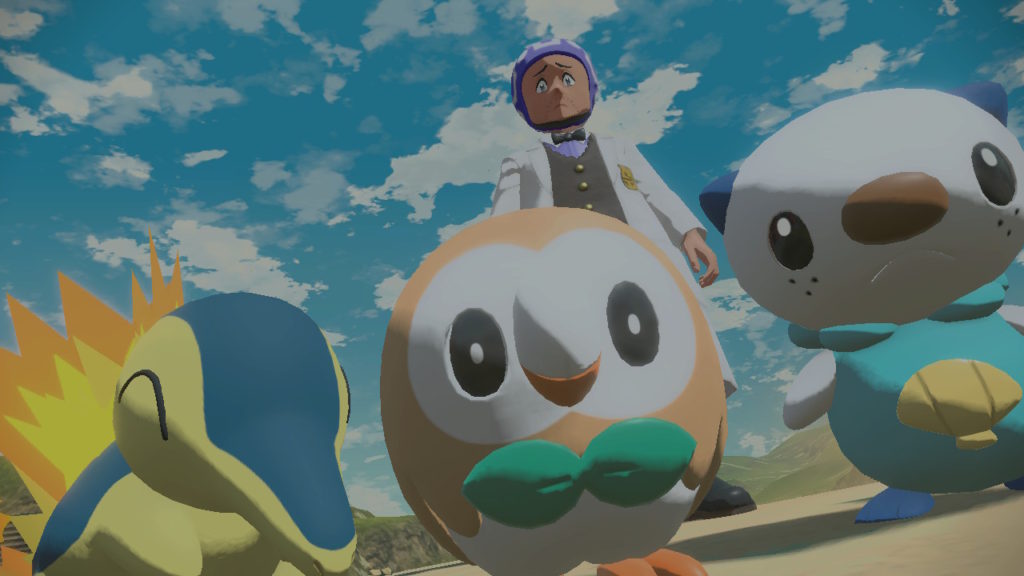
Provided by Nintendo
Pokémon Legends: Arceus — a Step Forward and a Step Back
If you told me, when Pokémon Diamond and Pearl released in 2006, that someday I would get a game that changed everything the way Pokémon Legends: Arceus did in 2022, I would have been ecstatic. Hell, I was ecstatic over the trailer for Pokémon Legends: Arceus — just seeing those vital changes brought new life into my love of Pokémon after a long time of being a fan, long enough to where some of the mechanical mainstays of the franchise started to feel a bit dated at minimum, had me bouncing off the walls with excitement. But the more I played through the game, the more… weird feelings about it kept coming up in the back of my head. Just small stuff at first, like “oh I didn’t think that people would be so terrified of these magical creatures.” The game does a great job of assuaging any questions you might have about that, though, because it very quickly shows you that these aren’t just the playful, fun magical creatures we already know and love; they’re wild animals, often much bigger than you, who are ready to roast you with a Flamethrower or put you into an early grave with Earth Power.
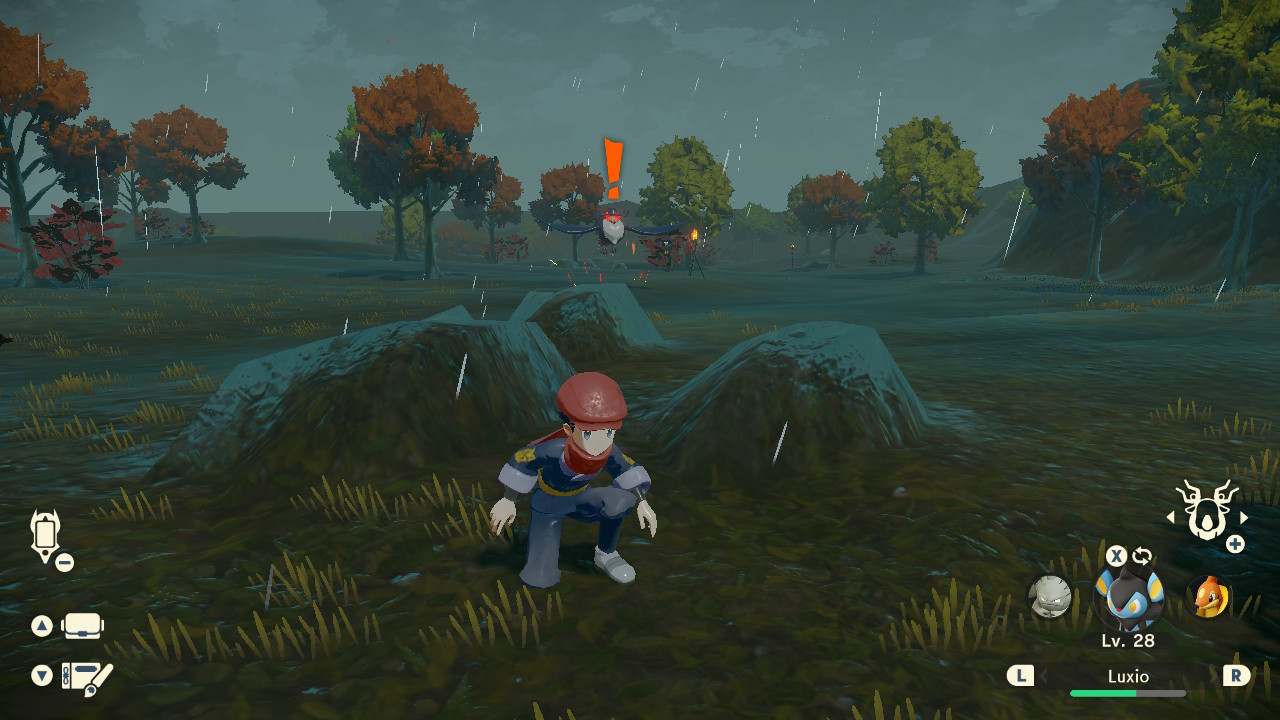
Where the game’s answers for my questions began to fall flat, however, were in my interactions with the Survey Corps and the Galaxy Team as a whole. There are subtle references to them not being from Hisui throughout, be it in their different speech patterns or in the ways that some of its members are clearly dressed differently from the people we’re shown are indigenous to this land, the Diamond and Pearl clans. Commander Kamado, Captain Cyllene, and much of the rest of Galaxy Team wear kimono styled after the typical Yamato version most people are familiar with, while the people of the Diamond and Pearl clans wear clothes reminiscent of the Ainu people indigenous to Hokkaido, the real-life island Hisui is based on. Your character can be dressed in a wide variety of clothing as well, with the aesthetics of each piece varying across designs.
Seeing the juxtaposition between the thoughts of different members of Galaxy Team against the way the indigenous people acted and thought felt reminiscent of how I felt when I started going to American school and they taught the “safe” version of what happened (and continues to happen) to Indigenous American people in the United States — it felt wrong. It felt like this game was, either intentionally or not, papering over what’s happening to Hisui and the people native to it. Then, Kamado points out that Galaxy Team aren’t from Hisui at all and those thoughts went from the back of my brain to being the main thing I thought about while playing. Why do the people who aren’t from Hisui get to be the authority here? Why do the Hisuians just… go along with it? What isn’t being shown here?
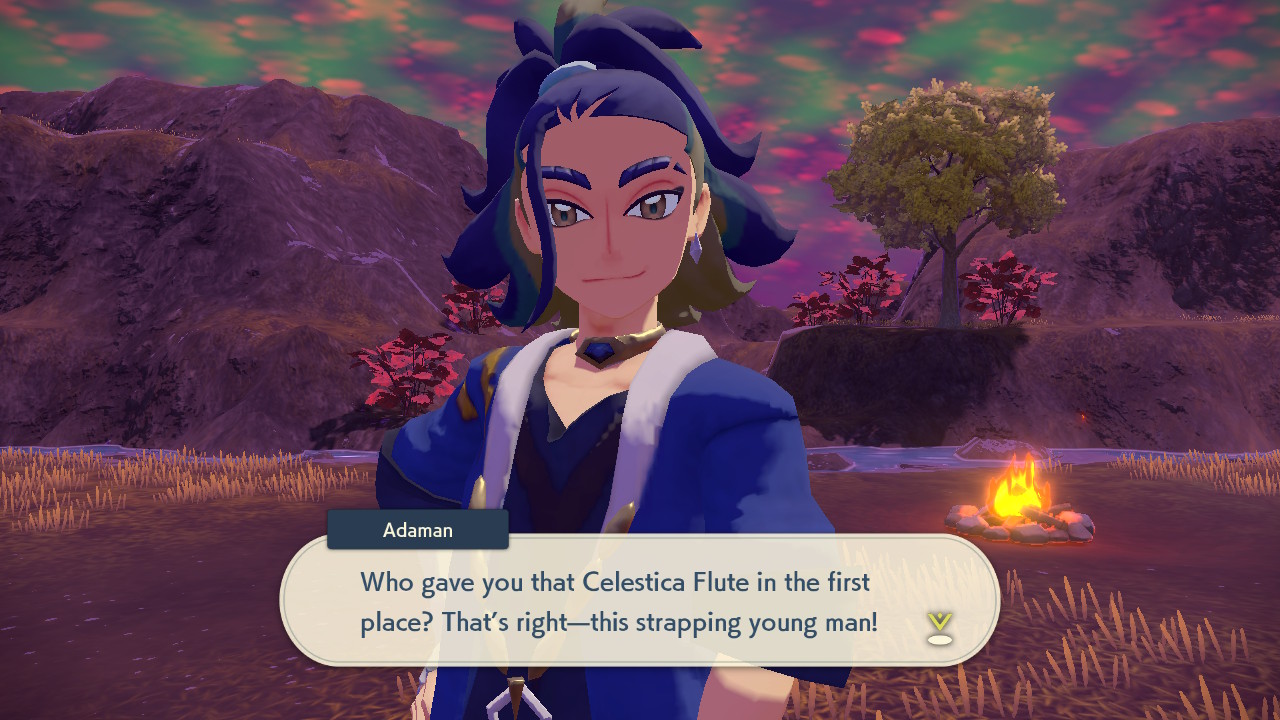
Being someone who is descended from not just one, but two groups that experienced colonization and attempted erasure at the hands of the Japanese empire, I understand that this isn’t something a lot of people are going to think about when they play this, and I don’t fault them for it. But it’s something that dogged my mind the entire time I played the rest of the game. Seeing the people of Hisui forced to assimilate into the game’s version of the “main” Yamato Japanese culture saddened me as someone descended from the Ainu people that were displaced from Hokkaido. On top of that, being Korean and knowing what happened to Korean people during the Japanese occupation, I felt upset seeing it happen in a fictional setting to a people who just had the ill fortune of being somewhere that someone else decided was valuable.
The game does take some steps to recognize Ainu and some pieces of Hokkaido culture; the (in?)famous potato mochi – a food from Hokkaido that isn’t often shown in media – is a great example of that. But even that offering is tainted in a way when it’s shown that Beni, the one cooking all that potato mochi, isn’t actually a sweet old Hisuian man who just loves making potato mochi for the village, but a ninja who has secretly been Kamado’s right hand man the whole time, having left whatever region they came from to colonize Hisui for a new home after theirs was ravaged by conflict, according to Kamado.
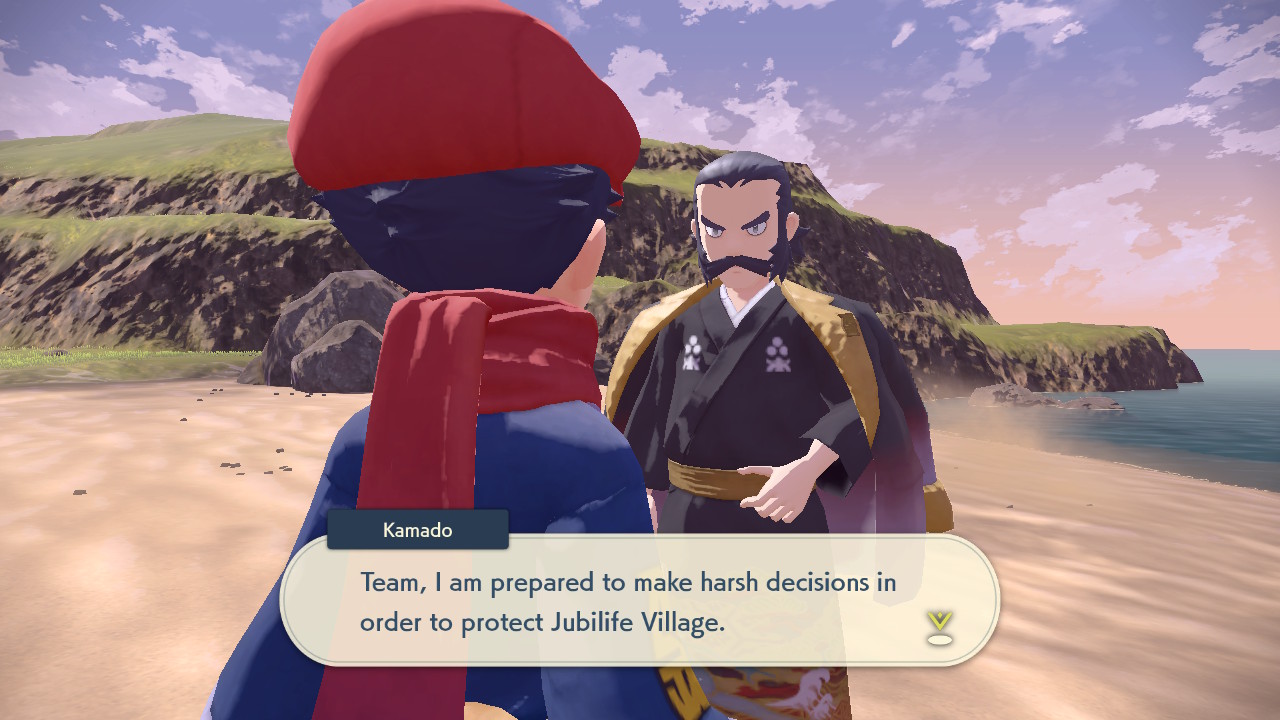
Even taking a look at the large, imposing building at the center of Jubilife Village, the Galaxy Team HQ, makes it clear that these people are not from around here. It’s a huge brick building, adorned with references to Pokémon like Galarian Weezing that are not present in Hisui, set against the rest of the village and all of Hisui. The rest of Jubilife village is paper walls and wood-framed buildings, much like what a global audience thinks of pre-Restoration Japan, and the Diamond and Pearl clans live in tents a lot like the Ainu live in. This contrast made me even more curious, so I started deliberately looking for stuff like this. I noticed that there seemed to be a clear connection between Team Galactic, an organization it seems very clear that the Survey Corps and the rest of Galaxy Team are a precursor to, and Galar, if in name only. Putting myself in that mindset also made me think more about other things that never quite lined up; why do Adaman and Irida risk their clan’s livelihoods based on what this relative stranger has to say? After all, they’re constantly (sometimes literally) butting heads with each other over the fate of Hisui. Why is it that when Commander Kamado from Galar comes in, they suddenly fall in line?
Even the way Galaxy Team largely fear Pokémon stands in direct opposition to the way the Diamond and Pearl clans revere and respect the noble Pokémon and Pokémon in general, the way the Ainu the Ainu believe that the kamuy (basically any of several types of nature spirit/divine being that helped to shape the world) are part of everything and that everything is part of the kamuy. We start to see some of that respect for Pokémon rub off on some members of Galaxy Team and residents of Jubilife Village, but even that relationship gets twisted in a way when most members of Galaxy Team just end up using their Pokémon as tools for jobs, not respecting them as partners the way Hisuians do. We can see bits of this when members of Pearl Clan talk about their distaste of using Poké Balls over bonding with their partner Pokémon, or in Jubilife Village where people are mostly either morbidly curious at best about Pokémon or outright using them as tools, like in the farm area.
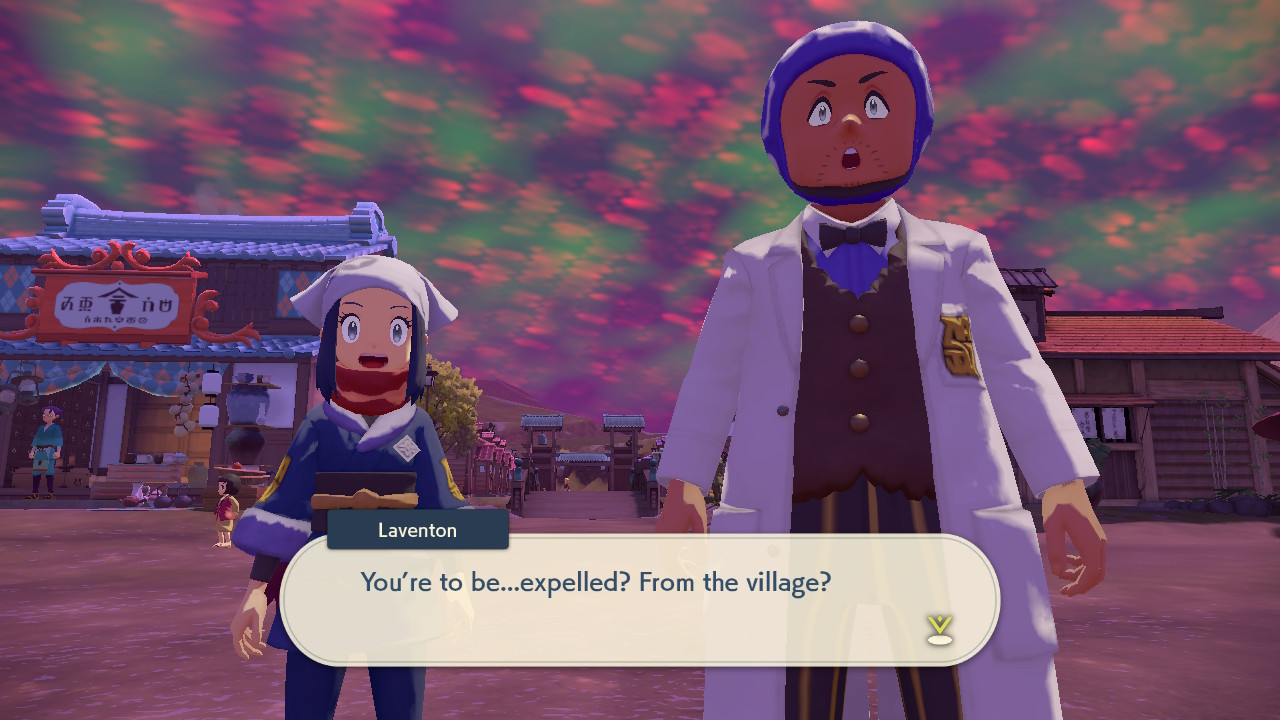
To me, it again seemed like the developers quickly papering over any potential “issues” this game could have faced in trying to craft an honest narrative, but then it begs the question — why even try teaching people about what happened if what you’re teaching them is built on a lie? In real life, while the colonization of Hokkaido isn’t known for being a period of sustained conflict, there were multiple battles between the Ainu and the Japanese imperials. It just doesn’t make sense to me how the Diamond and Pearl clans can go from people who, to use an earlier example, criticize the use of Poké Balls to essentially being another arm of Galaxy Team by the end of this game. To resolve this, the Hisuian people take a back seat and the game puts Kamado in the driver’s seat — even when your character is kicked out of Galaxy Team and one of the clans chooses to help you achieve your goal, the end goal is still based around Kamado, who has now even donned Galarian armor to protect him in his conquest. When your character, Adaman, and Irida do finally confront him, it’s only when faced with actual danger in the form of either Dialga or Palkia that he chooses to allow you and the indigenous people to carry out your group’s plan that’s based in the history of the region, the Pokémon in it, and the two clans’ shared knowledge of that history.
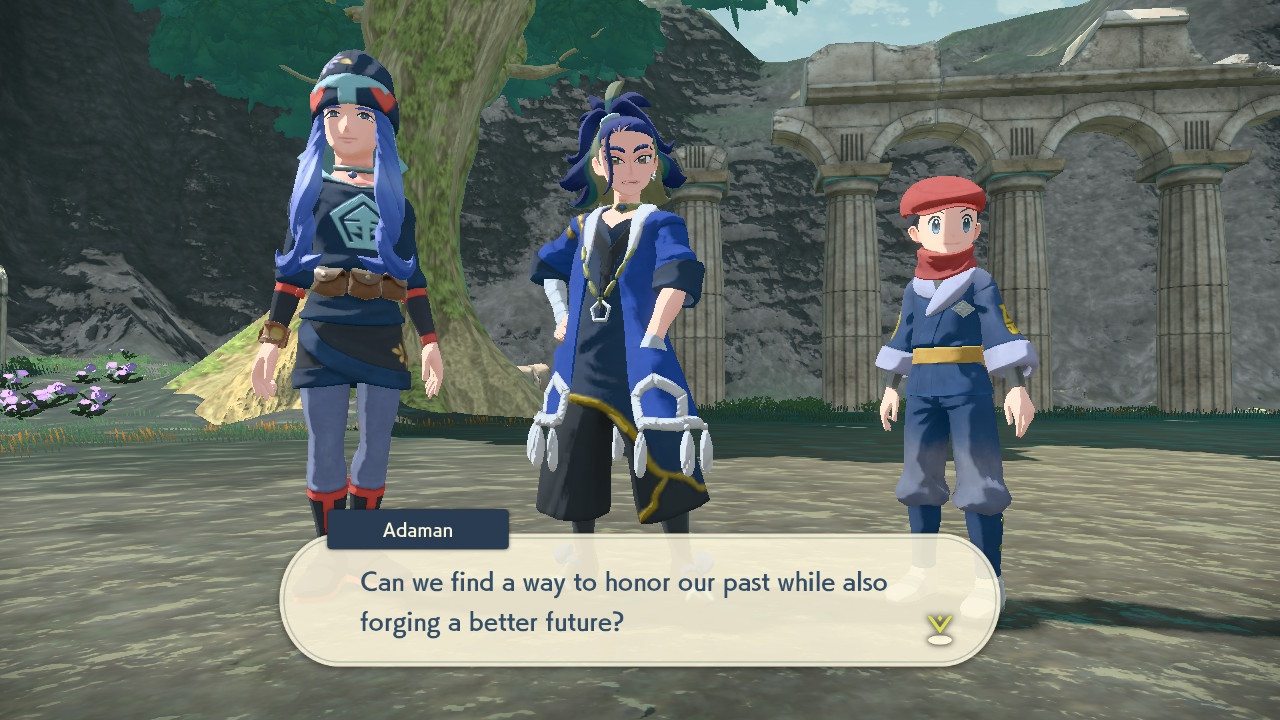
Ultimately, Pokemon Legends: Arceus and the representation it does actually have for Ainu people are a net win; it provided some long awaited mechanical overhauls to the franchise that will hopefully continue to progress even further, and modern Japanese society even acknowledging the Ainu and what happened to them is a relatively recent development, so it is honestly nice to see that they even tried. It’s just, for me, all bogged down with the weight of colonization, much like when any colonizing culture chooses to represent the people they’ve colonized without allowing those people into the creative process. It’s trinkets and costumes, with a sprinkling of the actual culture coming from the side characters like in the way Diamond and Pearl Clan members respect and revere Pokémon, or even just the ways they act and think.
At the end of it all, though, even if Adaman or Irida say they disagree with Kamado and the way he’s going about things, they still end up going along with his wishes for some reason that’s never quite explained in-game, but seemingly only because they’re afraid of what’s going to happen with the rift and they’ve just decided to trust this random man in charge of Galaxy Team instead of their long-held beliefs. I could go on for another 1200 words (and probably more on top of that) about all the other ways this reading could go even deeper, but I feel like this is a good place to stop and make my point — no one is a bad person for playing or enjoying this game. I don’t even think that people who worked on this game fully understood the implications of some of these aspects. I just want people to pay more attention to the cultures they choose to make games and other media about and be honest about giving what they’re doing the best effort they can, not only to make the people they’re talking about feel happy and respected, but to help educate others on these different cultures and what happened to them, rather than make us all just another set dressing.
If you like what we do here at Uppercut, consider supporting us on Patreon. Supporters at the $5+ tiers get access to written content early.






Hi! Thank you for this article, I’ve been trying to find essays and articles on the Ainu representation/colonization/Indigenous themes in Pokemon Arceus since first playing the game. I was wondering if you had also written an article (or what your thoughts were) addressing how the player character, essentially a colonizer/settler, basically came into Hisui and told the Ainu that their spiritual/religious beliefs were wrong (aka Almighty Sinnoh isn’t Palkia or Dialga) and how this ties into the long history of dismissing Indigenous knowledge and making it seem like their cultures are “backwards” or “wrong”? I’d love to read it as I feel that’s also something that needs to be addressed — that this game unintentionally dismisses the knowledge of Indigenous people/of the Ainu